Many nations wrestle with how to reconcile their past with the remnants that shape their present.
Some histories remain spectral, lingering in hidden scars, but Germany’s past manifests in colossal, inescapable forms of concrete, steel and stone, standing as silent yet deafening reminders of its Nazi past.
One such relic looms over the pristine coastline of Rügen, an island in northern Germany. Prora, a near-five-kilometre colossus, was born from the Nazi imagination. Today, what remains stretches three kilometres and exists in limbo between relic and reinvention.
Drawn by the island’s natural beauty, its endless beaches and dense forests, I have visited Rügen many times with friends. It is also the island where part of Goodbye to Berlin by Christopher Isherwood is set (one of my favourite books) and a connection that warrants its own exploration in writing.
The past few times I visited the island, I have found myself stepping away from the sand, drawn into the immense shadow and dark corners of Prora. When exploring it, I have wondered how this structure confronts its past and future.
Every visit begins the same way: entering from the north and walking south. The first sensation is one of scale due to Prora’s overwhelming, ungraspable length. The structure stretches into a vanishing point. To walk its full length takes the better part of an hour.
Then, there is its resilience. Decades of vandalism, war and neglect have left their marks, yet the building itself stands unbowed. Prora was built from reinforced concrete and was designed not to crumble.
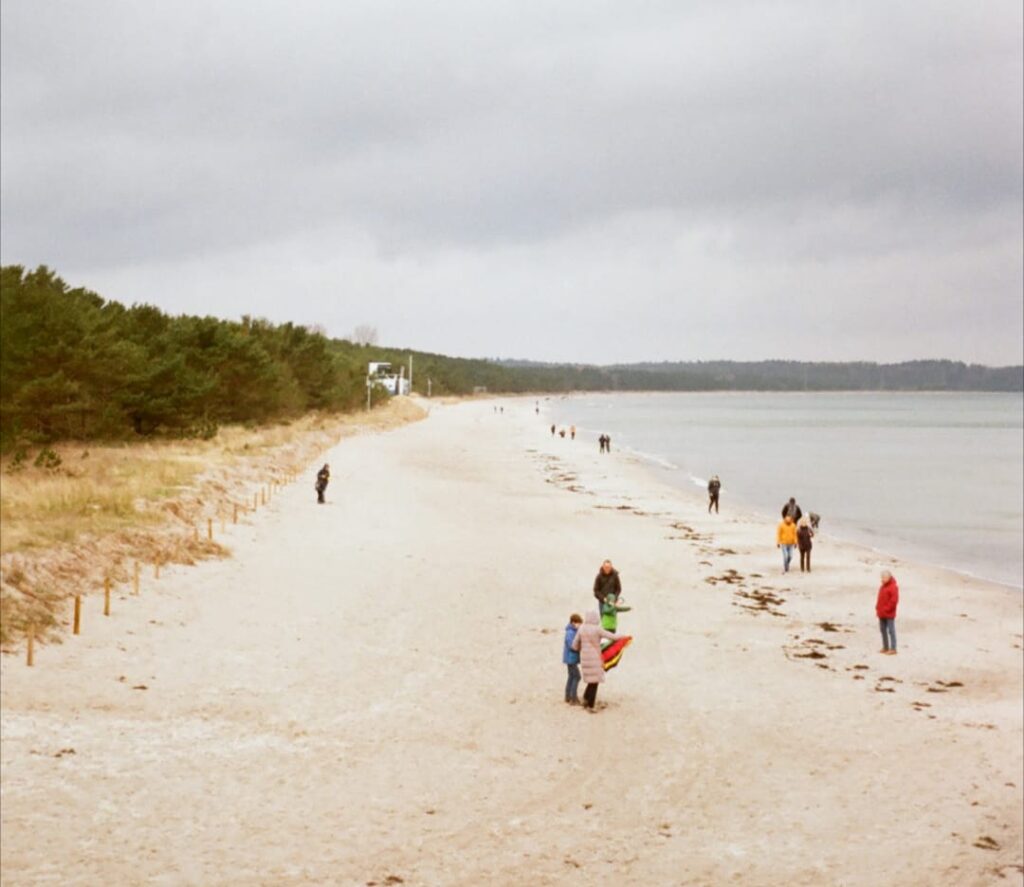

Its stubborn existence is fitting. Constructed between 1936 and 1939 as part of the Kraft durch Freude (Strength Through Joy, or KdF) project, Prora was envisioned as a ‘utopian’ holiday resort. However, it was never completed nor used for leisure; instead, it stood as a monolithic propaganda tool.
Yet with each visit, I witness transformation. What was once an abandoned spectre is now a construction site. Scaffolding and machinery are breathing a new identity into Prora. Many of its empty shell blocks have been sold, with plans for them to be repurposed into high-end holiday homes. At certain points, past and future collide, with raw concrete giving way to smooth white facades.

Where redevelopment has taken root, exploration is cut off. No longer an abandoned relic for wanderers and the curious, but private property, closed to prying eyes. Understandably, developers do not want tourists peering through the windows of luxury apartments, nor is it very interesting.
Yet in the places still untouched, still open to the elements, Prora’s past can still be seen. Vandals have left their scars in the shape of smashed windows, graffiti and decay. But climbing through a hole in the fence or finding a climbable ledge, you can still peer inside and glimpse relics of its various reincarnations.
In addition to the Nazis, there are also marks of the Soviets. After World War II, the Soviet Army controlled Rügen and repurposed the unfinished complex as a military base and storage site. Even after reunification, a youth hostel operated within its walls. These layers of history remain, stitched into the fabric of what is left untouched.
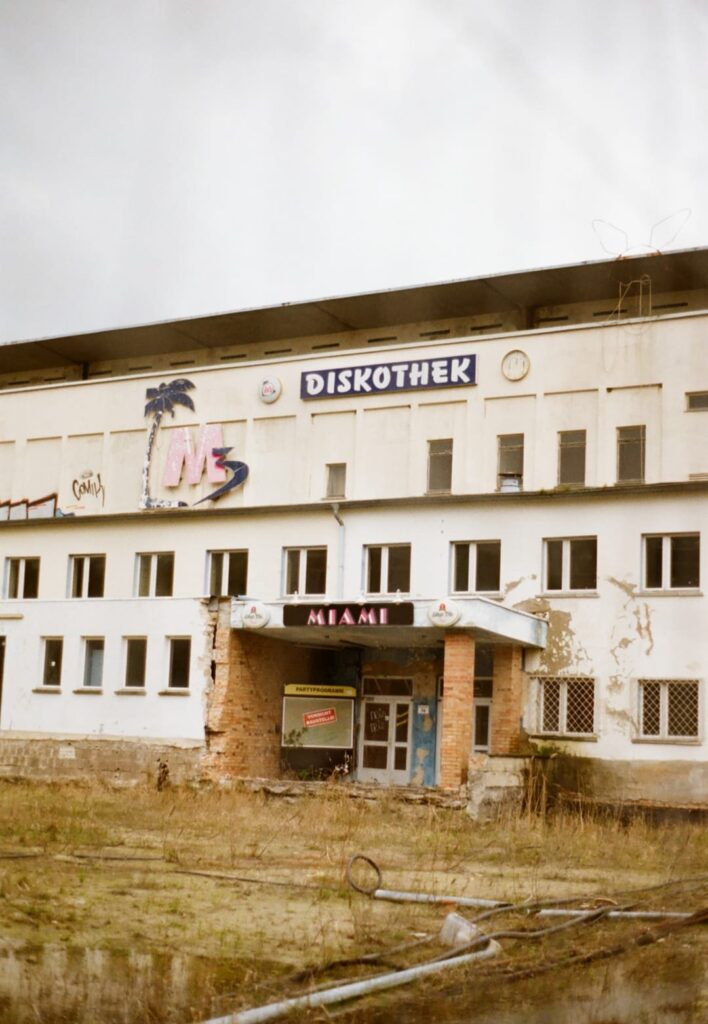
The most intriguing structures are those that were originally meant to fulfil the distorted vision of the KdF, including the plans for a festival hall, cafés, theatres, concert venues, swimming pools and gymnasiums.
The natural world also asserts its claim. The surrounding forests, dense with pines, at times press in against the structure, while vines and shrubs creep through the cracks, reclaiming the past brick by brick. And beyond, the Baltic Sea, vast and unforgiving, crashes against the shore.
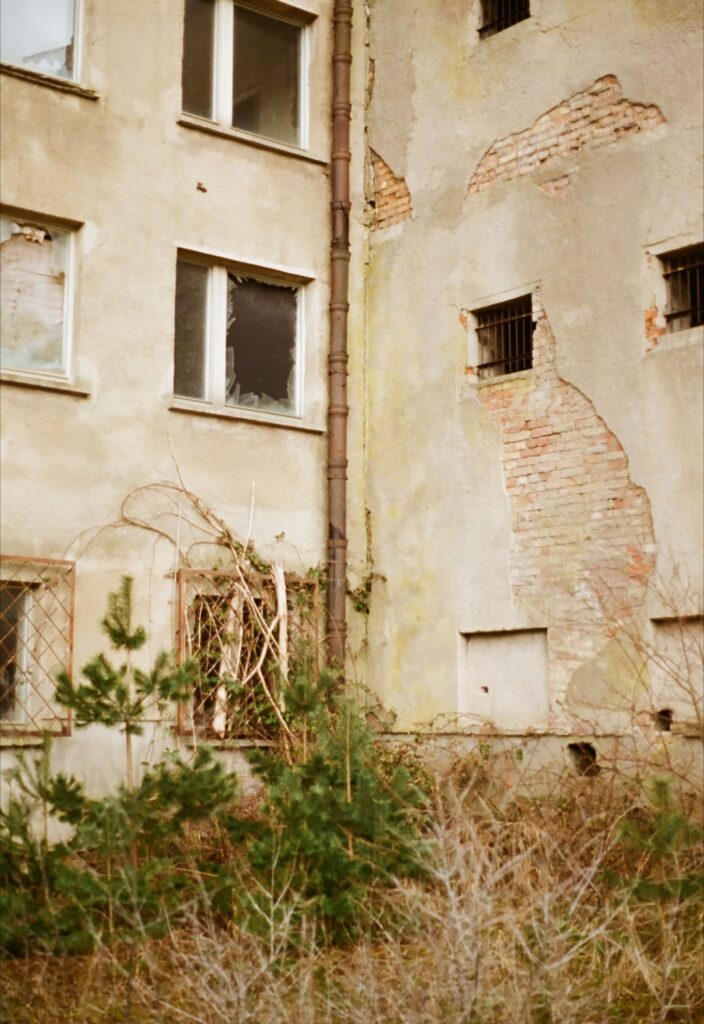
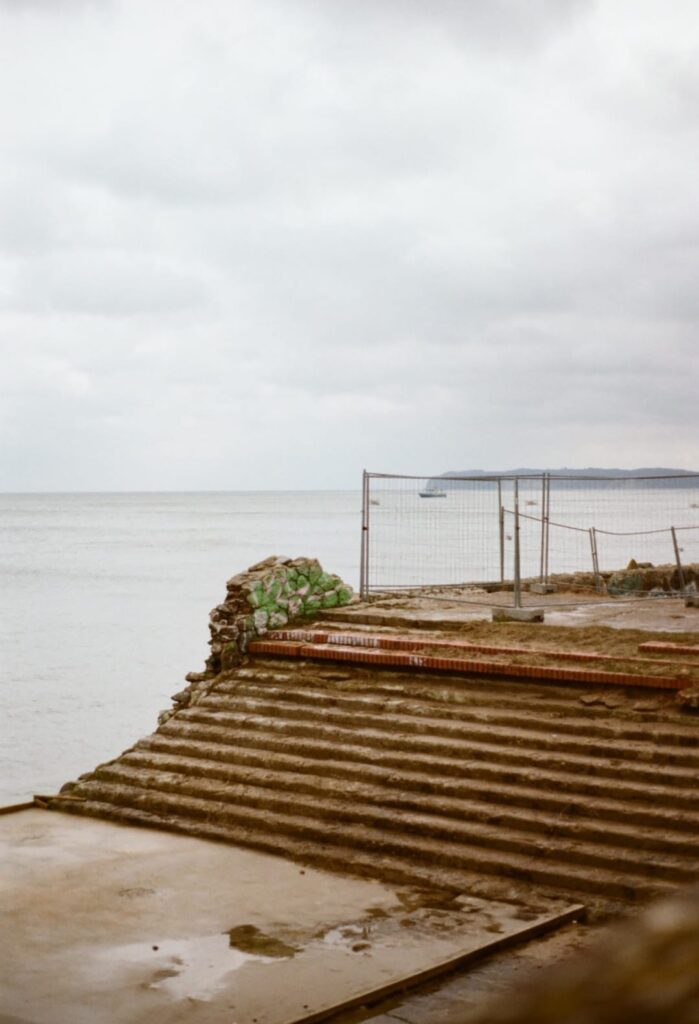
A museum, long present at the site, offers a formal explainer, speaking not only of Prora’s architecture but of the broader Nazi persecution. The exhibition expands beyond the concrete, using Prora as a lens to remind visitors of the atrocities that shaped its creation.
There is something unsettling about Prora. Its sheer scale and ideological weight represent the unresolved presence of a megastructure born of an evil regime.
But as time marches forward, Prora is assuming a new identity. Its history is being renovated, its brutalist past polished into something inhabitable.
Ironically, it is now fulfilling its original intention: a holiday resort. This realisation strikes as I relax on the beach at Binz, south of the complex. Sunbathers, families, tourists and people enjoying the space, reclaiming it in their own way. Perhaps this is the final transformation. A place designed as a symbol of ideological control has been subsumed into ordinary life.
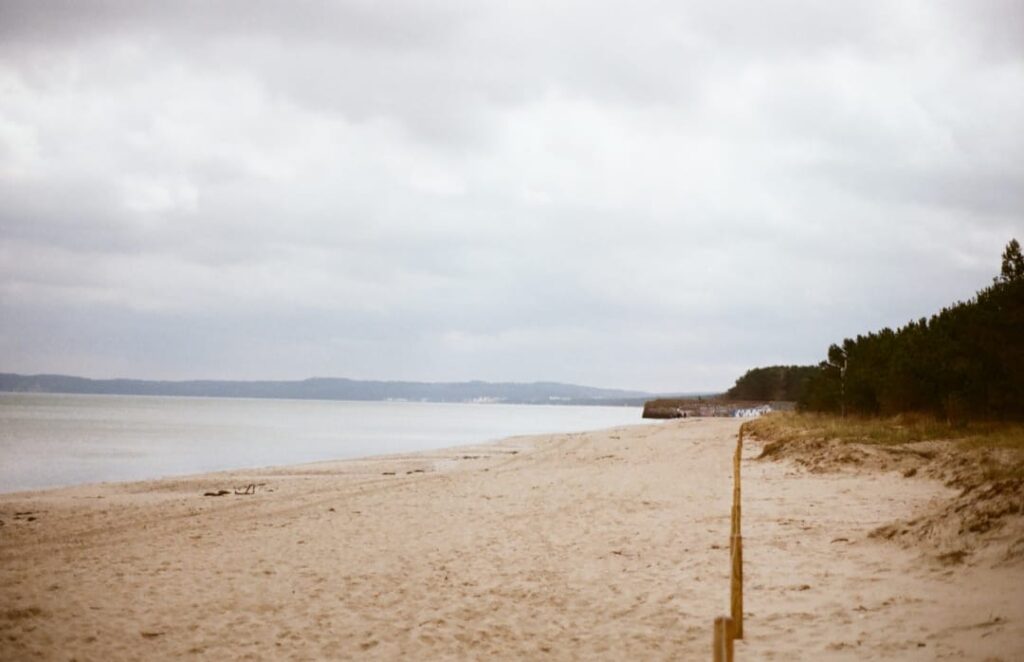
*The photos were taken on a visit to Rugen in April 2024. The camera used was a Minolta x-300 with a 50mm lens. The film is 35mm Kodak Gold 400.
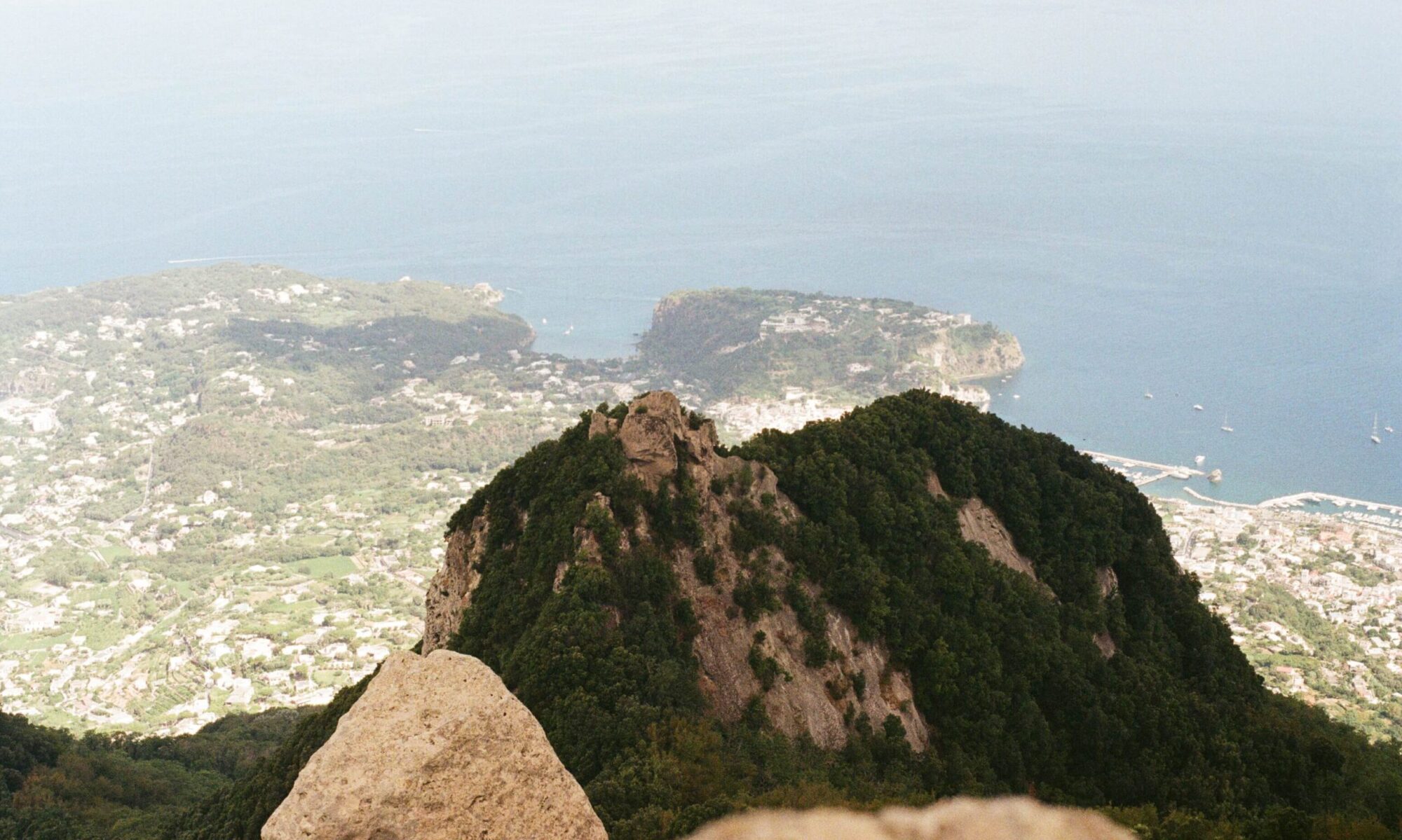
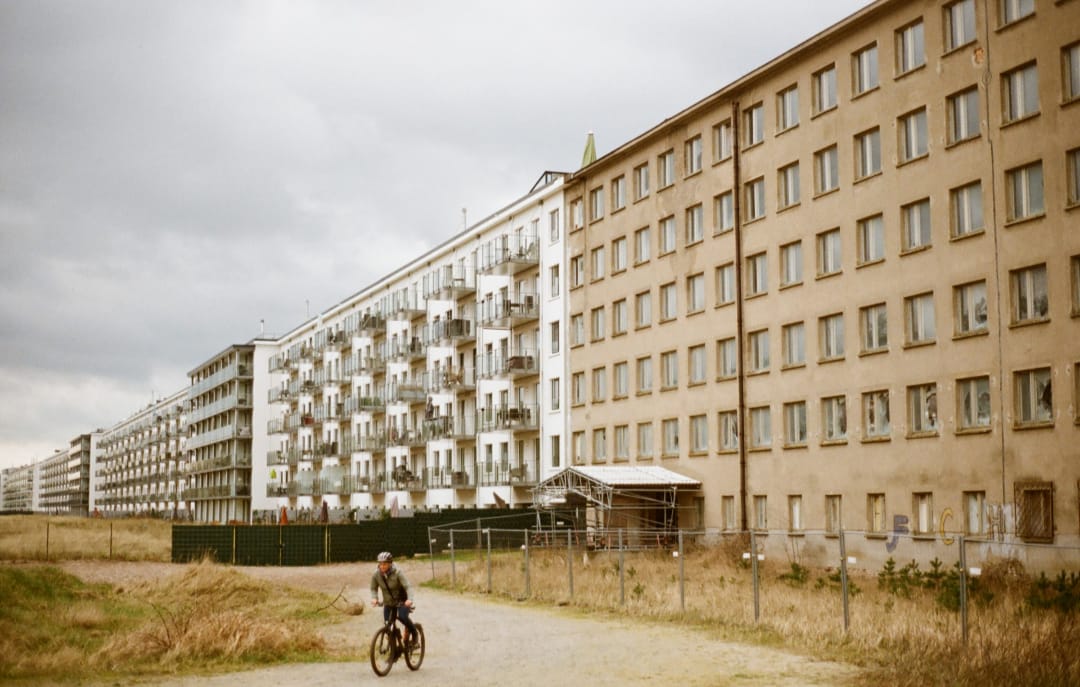
I enjoyed reading this article. Thanks for sharing your insights.